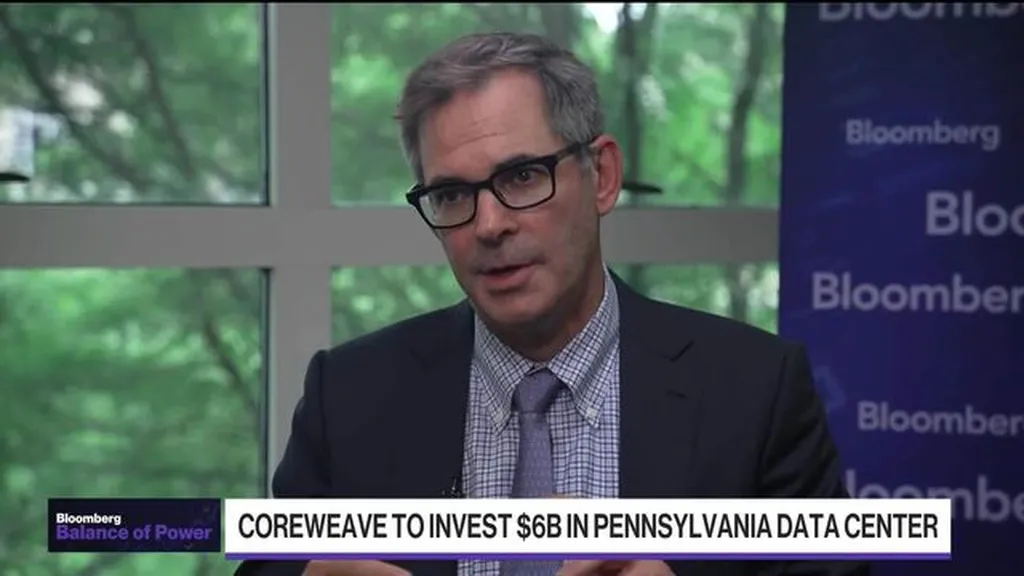In the heart of Pennsylvania, a bold vision for the future of artificial intelligence is taking shape, and it’s being built brick by brick, server by server. The recent announcement of a $6-billion data center project in Lancaster, spearheaded by a joint venture between Turner Construction and Wohlsen Construction, is not just another construction story—it’s a blueprint for the AI-driven economy of tomorrow.
At the Energy and Innovation Summit in Pittsburgh, CoreWeave, a New Jersey-based cloud computing startup, unveiled plans for a massive data center that will serve as the backbone of AI infrastructure in the Mid-Atlantic region. The project, co-developed by Chirisa Technology Parks and Machine Investment Group, is estimated to be a 100-MW facility with the potential to expand to 300 MW. This isn’t just a data center; it’s a purpose-built hub designed to power the AI revolution, according to CoreWeave CEO Michael Intrator.
The scale of this project is staggering. With an investment of $6 billion, it will add to CoreWeave’s existing portfolio of 28 data centers across the U.S. While the exact location, size, and completion date remain undisclosed, the project is expected to create 600 skilled worker jobs during construction and up to 175 full-time roles once operational. This isn’t just about building a facility; it’s about building a workforce and an ecosystem that will drive innovation and economic growth.
Pennsylvania Governor Josh Shapiro sees this project as a game-changer for the state and the broader region. “Pennsylvania is competing again and bringing in billions of dollars in new investment … to support our technology sector, and CoreWeave’s $6 billion investment will continue to build on that work,” Shapiro said. His administration is pulling out all the stops to ensure the state is ready for such investments, from workforce development to streamlining permitting processes and securing funding for site development.
Sen. Dave McCormick (R-Pa.) echoed these sentiments, calling the project a “transformative investment” that will position Pennsylvania as a leader in the AI economy. This isn’t just about attracting big names and big dollars; it’s about creating a sustainable, forward-thinking environment where technology and talent can thrive.
For Turner Construction and Wohlsen Construction, this project is a testament to their expertise and commitment to innovation. Turner Construction, ranked No. 1 on ENR’s 2025 Top 400 Contractors list with $20.2 billion in 2024 revenue, brings global experience and cutting-edge construction practices to the table. Wohlsen Construction, ranked No. 43 on ENR’s East 2025 Top Contractors list with about $439.3 million in regional 2024 revenue, adds local knowledge and a deep understanding of the Mid-Atlantic market.
But what does this mean for the construction industry and the broader economy? It’s a signal that the future is here, and it’s powered by data. The demand for data centers is surging as AI and cloud computing become integral to nearly every sector, from healthcare to finance to manufacturing. This project is a clear indication that the construction industry must adapt to meet these evolving needs, integrating advanced technologies and sustainable practices into every phase of development.
Moreover, it underscores the importance of collaboration between the public and private sectors. Governments must create policies and infrastructure that support innovation, while businesses must invest in the communities where they operate. This project is a shining example of how these partnerships can drive economic growth and position regions as leaders in emerging industries.
As the construction industry continues to evolve, projects like this one will serve as a blueprint for the future. They challenge us to think bigger, build smarter, and create environments that not only house technology but also foster innovation and community. The $6-billion data center in Lancaster isn’t just a building; it’s a beacon of what’s possible when vision, investment, and collaboration come together. And it’s a reminder that the future of construction is not just about erecting structures—it’s about building the foundation for a smarter, more connected world.

